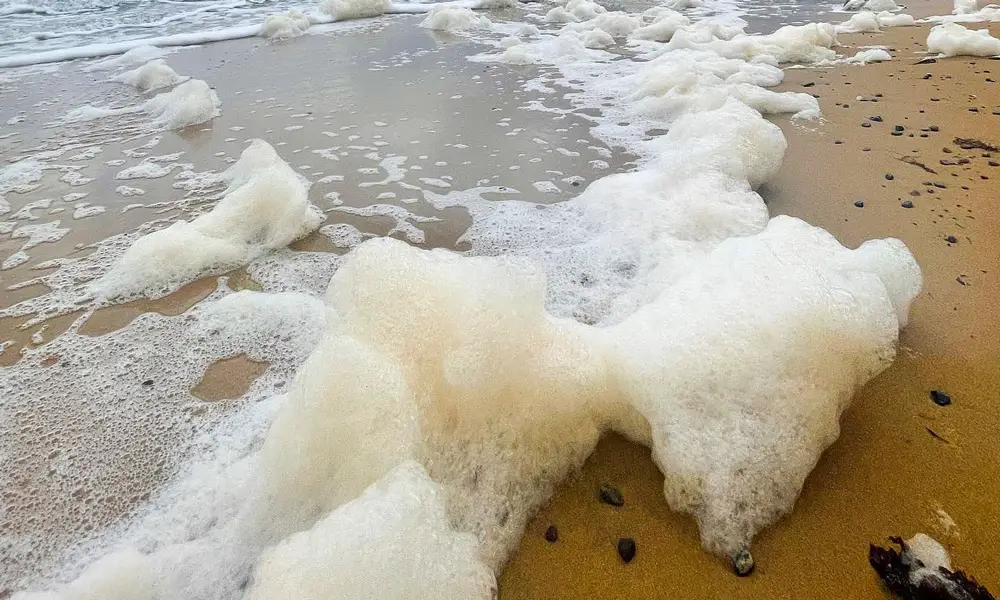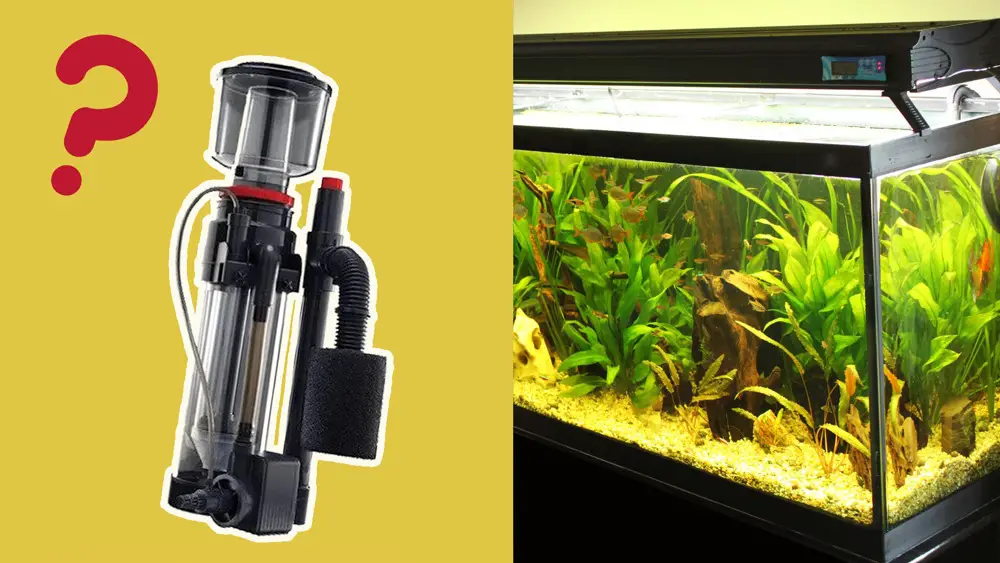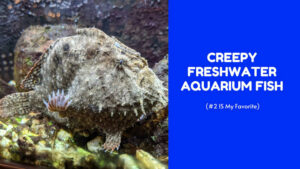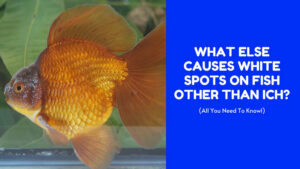Protein skimmers are one of the essential pieces of equipment in a saltwater aquarium, which work by using foam fractionization to attract and remove protein from the water to help maintain water quality. Perhaps you are wondering whether or not you should use a protein skimmer for the freshwater tank?
Unfortunately, the truth is that protein skimmers are not nearly as effective in freshwater aquariums unless the protein level in the water is very high. The physical mechanisms that protein skimmers use to remove protein from saltwater don’t work as efficiently in freshwater. As a result, the only way to remove dissolved organic matter (DOM) from a freshwater aquarium is to do regular water changes.
While commercial saltwater protein skimmers don’t really work in freshwater aquariums, modified (DIY) protein skimmers can be beneficial in large freshwater cichlid tanks and ponds. This article will cover everything you need to know about protein skimmers and if you should use one for your freshwater aquarium.
How do Protein Skimmers Work?
A protein skimmer, also known as a foam fractionator, is a device mainly used to remove organic hydrophilic matter from a marine aquarium, such as uneaten food, fish waste, suspended particles, and Tannins.
The principle behind protein skimming is simple, by simulating the effect of deep water waves in the ocean. In nature, sea foam forms from dissolved organic matter churned up by wind and waves. Have you seen this white/beige foamy stuff often wash ashore? That’s the same kind of matter in your protein skimmer collection cup.

While the basic function is fairly straightforward, the actual process of foam fractionization is quite complex. Moreover, the protein skimmer design has changed and evolved quite a bit over the years.
Today, most protein skimmers work by drawing in aquarium water through a pump where both the high-speed water flow and air are mixed and chopped up by a venturi valve. These microbubbles then rise to the top of the reaction chamber and are collected in a cup for easy removal. Some protein skimmers also have a protein-removal pillow that helps to further remove dissolved organic matter from the water.
Check out this diagram from bulkreefsupply to see how protein skimmers work:

Why Do Protein Skimmers not Work Well in Freshwater?
Now you know how protein skimmers work, you might be wondering why they aren’t as effective in freshwater aquariums.
Simply put, this amazing foam fractionation chemical process is all due to surface tension. When the micro-bubbles whirl around in the water, the dissolved organic compounds are attracted to the bubble by surface tension.
However, the strength of this force (surface tension) is directly related to the salinity of the water. According to MIT research,
They found that surface tension decreases by roughly 20 percent as water goes from room temperature toward boiling. Meanwhile, as salinity increases, surface tension increases as well. The team had unlocked the mystery of seawater surface tension.
MIT research on seawater surface tension becomes international guideline
This process is much more effective in saltwater because the higher surface tension allows for a stronger attraction between the bubbles and the DOM.
Freshwater protein skimming is only possible to a limited extent, making it not practical for aquaria. The only advantage of using commercial saltwater protein skimmers in freshwater tanks is that it increases the oxygen saturation of water. While considering the cost, an aquarium bubble stone can do the same job for a fraction of the price.
Oil and Protein Films in Freshwater Aquarium?

So we know a protein skimmer removes protein and other dissolved organic matter from saltwater, but what about freshwater?
Often, you’ll see a protein or oil film on the surface of your freshwater aquarium. While this might not be harmful to your fish, it’s unsightly and can indicate that your tank isn’t as clean as it should be.
Like the dissolved organic matter (DOM) from contaminants in a saltwater aquarium, these greasy oil slicks from freshwater aquarium may result from the same type of pollution.
Most Common Causes of Aquarium Oil Slicks
Here are the most common causes of protein films in freshwater aquariums:
- Uneaten food: If you’re overfeeding your fish, there’s a good chance that uneaten food will end up decomposing in your tank. Its proteins and oils will rise to the surface and create a protein film.
- Fish waste: Fats from your fish poop are a common cause of protein films, especially these huge waste producers, like Oscar and large African Cichlids.
- Filters and pumps: Any time you have a pump or filter running, there is a chance that it will release some oil into the water.
- Your hands: If you’ve been handling your fish or working in the aquarium, it’s possible that your skin oils have transferred into the water and are causing the protein film. Not to mention the hand lotion, soap, and other chemicals you use daily.
- The air: Sometimes, oil films are caused by airborne contaminants like aerosol cooking oils, perfumes, or other pollutants that have landed on the surface of the water.
- Dead Fish: A dead fish can actually cause serious problems for your aquarium. The decomposing body releases fat and proteins into the water, forming oily slicks.
How to Get Rid of Oil and Protein Films?
The good news is that you can do a few things to get rid of protein films in your freshwater aquariums.
The simplest way to remove the oil film is to turn off your aquarium equipment and let the water settle for a few hours. The protein film will rise to the surface, and you can then remove it with a paper towel or coffee filter. You may need to repeat this process a few times to completely remove it.
You can try using a measuring cup to remove the film for a larger oil film. Slowly pour the water into the cup, making sure only to submerge the lip, so only the protein film and water enter the cup instead disturb the protein film on the surface. Repeat the process until the protein film is gone.
In the unhappy event that you find yourself constantly battling oil slicks, it might be a good idea to invest in a surface skimmer. Unlike protein skimmers designed to remove dissolved organic compounds, a surface skimmer will not only remove the hydrophobic surface films and scum but also help increase gas exchange and oxygenation in your aquarium. But more than that, it’s affordable!
- Works to eliminate undesired surface films
- Helps improve oxygen exchange
- Removes organic waste from the surface
- Helps keep your aquarium water clean and clear
- Simple to use
DIY Protein Skimmer Ponds
For those of you with ponds, modified (DIYed) protein skimmers can be a great way to remove dissolved organic matter before it has a chance to break down and release ammonia and nitrites into the water.
You can easily make your own protein skimmer by following this video.
Final Thoughts
While protein skimmers are an amazing piece of equipment for saltwater aquariums, they are not as effective in freshwater tanks. The only way to remove dissolved organic matter from a freshwater aquarium is to do regular water changes. Of course, being an owner, it’s your responsibility to keep your tank clean and free of any protein films anyway!
If you have an oil slick or protein film on the surface of your freshwater aquarium, follow the tips we’ve given you in this article, and you should be able to get rid of it quickly and easily.
Have some great tips on getting rid of protein films? Don’t hesitate to share them with us in the comments section below!
Meta






